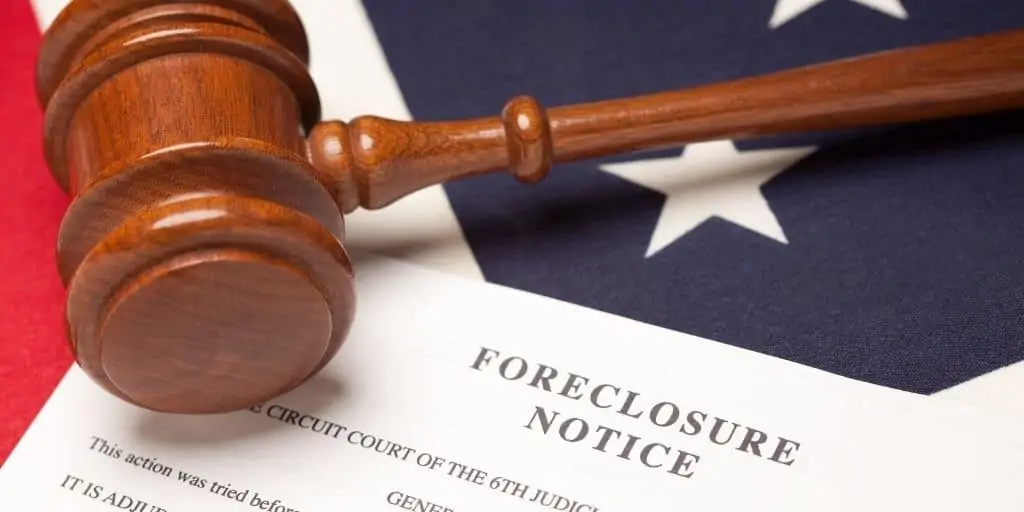
REtipster does not provide legal advice. The information in this article can be impacted by many unique variables. Always consult with a qualified legal professional before taking action.
Years ago, when I started using owner financing to sell my properties, it took a lot of time for me to figure out how it all worked.
After navigating through my first few deals and asking a lot of questions of various attorneys and title companies in my area, I finally felt like I understood what I was doing (what documents I needed to use, what language should be included, what I needed to do if my borrowers stopped paying, etc.).
But when I started doing deals in a new state, I was surprised that many things I had learned in state #1 didn't apply in state #2. There was a new set of rules about what documents I needed to use and how the foreclosure process would work if my borrower defaulted on their payments.
One of the big differences I saw was what type of loan instrument I needed to use.
Another big variation was how the foreclosure process worked. Some states were known as judicial foreclosure states, while others were known as non-judicial foreclosure states.
Judicial Foreclosure and Non-Judicial Foreclosure: What's the Difference?
Non-judicial foreclosure is a process that allows the lender to foreclose on the property without involving the courts. When a borrower misses their payments, the lender's first step is to issue a notice of default, so the borrower is fully aware that they need to make their payment if they want to keep their property. At the same time, this notice is also recorded as a public notice of the borrower's past due status.
When this notice of default is issued, it effectively starts a time clock for the borrower to pay as agreed in order to avoid legal recourse from the lender. If the stated deadline in the notice of default passes and the borrower has not cured the default, the lender can proceed with a court action to foreclose on the property (in a judicial foreclosure state) or their trustee can sell the property at auction (in the case of a deed of trust in a non-judicial foreclosure state).
In a judicial foreclosure, the foreclosure is processed through the court system, which means there will be judicial oversight of the process, additional costs involved, and sometimes a longer period of time to get the job done. The defaulting borrower also has an opportunity to raise any defenses they may have without having to file their own court case.
Why Does It Matter?
If you're financing a real estate transaction (whether you're the owner offering seller financing, a hard money lender, a conventional lender, or otherwise), you'll probably take that property as collateral to protect yourself if that borrower ever stops paying.
But when it comes time to foreclose on that property so you can recoup your losses, the process in a non-judicial foreclosure state can look very different from a judicial foreclosure state. Non-judicial foreclosures are typically more straightforward and allow the lender to manage the process in-house, whereas judicial foreclosures involve more red tape, time, and legal costs.
If you want to know which states will make foreclosure easy and which states will make it harder, a big component of this hinges on whether the state allows for a non-judicial foreclosure.
State-by-State Map: Which States Are Judicial vs. Non-Judicial?
As I spent many hours doing state-by-state research throughout the U.S., I aimed to find no less than three external sources that all agreed about how each state's foreclosure process worked.
One interesting thing is that every state that allows lenders to use a non-judicial foreclosure process, it also allows a judicial foreclosure if the lender's loan documents don't include the “power of sale” clause giving them the right to pursue a non-judicial foreclosure.
The states to watch out for are the judicial foreclosure states, which force any foreclosure to go through the court system.
Legal Disclaimer: The information on this map was pulled from several sources, both online and offline. If you want to explore the sources we used, each one will be linked within each state. This map isn’t intended to be the authoritative answer on how each state works, but simply the most educated assessment we could make based on the information we were able to gather. If you have evidence to show that our assessment is incorrect in any particular state, feel free to contact us and point out any sources to support your claim.
Sources
As I mentioned above, we referenced A LOT of other sources to support and verify the statements above. In most cases, every source of information we could find agreed with one another. However, a few seemed to have some contradictions (New York, Wisconsin, and Vermont were a few such examples). As always, this list isn't intended to be a definitive or authoritative source of information, it just represents the answers we found for each state. Always do your own research and seek legal counsel for your own situation before you take action.
Here's the full list of sources we used for each state.
- ALABAMA is a non-judicial foreclosure state. While judicial foreclosures are also allowed, they are rarely used. Sources: RealtyTrac, The Norris Group
- ALASKA is a non-judicial foreclosure state. Judicial foreclosures are also available in Alaska when a mortgage needs to be foreclosed on, but most foreclosures are done non-judicially through a deed of trust with a power of sale clause included. Sources: RealtyTrac, The Norris Group
- ARIZONA allows both non-judicial and judicial foreclosures. Non-judicial is the most common, except when there is no power of sale clause in the loan instrument. Judicial foreclosures are available, but not used often. Sources: ForeclosureLaw.org, RealtyTrac, Folk Hess PLLC, Practical Law, AZLawHelp.org
- ARKANSAS foreclosures can happen through either a judicial or non-judicial foreclosure process. Non-judicial foreclosures are more common and judicial foreclosures can happen when the power of sale clause wasn't included in the original loan instrument. Sources: ForeclosureLaw.org, The Norris Group
- CALIFORNIA is a non-judicial foreclosure state. However, judicial foreclosure is allowed if the lender requests it. Sources: California Courts, The ABCs of California Foreclosure Law, The Norris Group, RealtyTrac
- COLORADO allows both non-judicial and judicial foreclosures. Non-judicial foreclosures are the most common. Judicial foreclosures are available, but not used often. Sources: Nolo, AllLaw, Lawyers.com
- CONNECTICUT is a judicial foreclosure state. The judicial foreclosure process is implemented by either strict foreclosure or a decree of sale foreclosure. Sources: Nolo, RealtyTrac, ForeclosureLaw.org, The Norris Group
- DELAWARE is a judicial foreclosure state. Lenders must go through a court proceeding to foreclose on the borrower. Sources: ForeclosureLaw.org, The Norris Group, RealtyTrac
- FLORIDA is a judicial foreclosure state. The lender is required to file a court action and record a notice of a pending lawsuit against the borrower. Sources: The Florida Senate, PropertyShark, ForeclosureLaw.org, Kelley, Fulton & Kaplan
- GEORGIA allows both non-judicial and judicial foreclosures. Non-judicial is the most common and judicial foreclosures can happen in cases where the power of sale clause wasn't included in the original loan instrument. Sources: The Norris Group, ForeclosureLaw.org, law.georgia.gov
- HAWAII allows both non-judicial and judicial foreclosures. For many years, foreclosures in Hawaii were more commonly handled non-judicially, but after Hawaii implemented a mortgage foreclosure dispute resolution program as part of the non-judicial foreclosure process, lenders regularly began opting for the judicial foreclosure process to avoid participating in it. Sources: AllLaw, Nolo, Hawaii State Judiciary
- IDAHO allows both non-judicial and judicial foreclosures. Non-judicial is the most common, except when there is no power of sale clause in the loan instrument. Sources: The Norris Group, RealtyTrac, Foreclosure.com, LawInfo
- ILLINOIS is a judicial foreclosure state. The judicial foreclosure process can be implemented through a strict foreclosure, consent foreclosure, or a normal judicial foreclosure process. Sources: Illinois General Assembly, The Norris Group, RealtyTrac
- INDIANA is a judicial foreclosure state. Sources: AllLaw, Nolo, ForeclosureLaw.org
- IOWA is primarily a judicial foreclosure state. There is also a non-judicial voluntary foreclosure available, if the lender and borrower can agree on it, the borrower can transfer the deed to the lender and the lender can subsequently waive their right to sue the borrower for a deficiency judgment. Sources: Lawyers.com, The Norris Group, Nolo, legis.iowa.gov
- KANSAS is a judicial foreclosure state. Sources: RealtyTrac, The Norris Group, ForeclosureLaw.org
- KENTUCKY is a judicial foreclosure state. Sources: Foreclosure.com, The Norris Group, LawFirms
- LOUISIANA is a judicial foreclosure state. Sources: Nolo, RealtyTrac, ForeclosureLaw.org
- MAINE is a judicial foreclosure state. Sources: Maine Department of Professional and Financial Regulation, State of Main Judicial Branch, ForeclosureLaw.org
- MARYLAND foreclosures can happen through either a judicial or non-judicial process. Sources: Maryland Department of Labor, Nolo, ForeclosureLaw.org
- MASSACHUSETTS allows both non-judicial and judicial foreclosures. Non-judicial is the most common and judicial foreclosures can happen in cases where the power of sale clause wasn't included in the original loan instrument. Sources: Foreclosure.com, MAlegistlature.gov, ForeclosureLaw.org
- MICHIGAN is a non-judicial foreclosure state. However, judicial foreclosure is allowed if the lender requests it. Sources: Michigan.gov, MichiganLegalHelp.org, MIforeclosure.mplp.org
- MINNESOTA allows both non-judicial and judicial foreclosures. Sources: Minnesota Judicial Courts, Minnesota Legislature
- MISSISSIPPI allows both non-judicial and judicial foreclosures. Sources: Mississippi Legislature, AllLaw, ForeclosureLaw.org
- MISSOURI allows both non-judicial and judicial foreclosures. Sources: house.mo.gov, AllLaw, ForeclosureLaw.org
- MONTANA is a non-judicial foreclosure state. Sources: Montana Legislature, The Norris Group, RealtyTrac, ForeclosureLaw.org
- NEBRASKA allows both non-judicial and judicial foreclosures. Sources: Nolo, Steffens Law Offices, RealtyTrac
- NEW HAMPSHIRE foreclosures can happen judicially or non-judicially, depending on the loan documentation. Sources: Nolo, ForeclosureLaw.org, New Hampshire Legal Aid
- NEW JERSEY is a judicial foreclosure state. Sources: RealtyTrac, The Norris Group, ForeclosureLaw.org
- NEW MEXICO is a judicial foreclosure state. While New Mexico does technically have a non-judicial foreclosure process, it is rarely used on residential properties. Sources: LawInfo, RealtyTrac, Foreclosure.com
- NEW YORK is a judicial foreclosure state. Sources: NYCBar, Rosenberg, Musso & Weiner LLP, Nolo
- NORTH CAROLINA allows both non-judicial and judicial foreclosures. Sources: RealtyTrac, ForeclosureLaw.org, The Norris Group
- NORTH DAKOTA is a judicial foreclosure state. Sources: North Dakota Century Code t32c19, The Norris Group, RealtyTrac
- NEVADA allows both non-judicial and judicial foreclosures. Non-judicial is the most common, except when there is no power of sale clause in the loan instrument. Sources: PropertyRadar, The Norris Group, ForeclosureLaw.org, RealtyTrac, Foreclosure.com
- OHIO is a judicial foreclosure state. Sources: Cope Law Offices, LLC, ForeclosureLaw.org, RealtyTrac
- OKLAHOMA allows both non-judicial and judicial foreclosures. Sources: Oklahoma Bankruptcy Law, The Goodling Law Firm P.C., ForeclosureLaw.org
- OREGON allows both non-judicial and judicial foreclosures. Non-judicial foreclosure is more common. Judicial foreclosures are available when there is no power of sale clause in the loan instrument. Sources: PropertyRadar, RealtyTrac, The Norris Group
- PENNSYLVANIA is a judicial foreclosure state. Sources: Nolo, ForeclosureLaw.org, RealtyTrac
- RHODE ISLAND allows both non-judicial and judicial foreclosures. Non-judicial foreclosures are the most common. Sources: Nolo, The Norris Group, ForeclosureLaw.org
- SOUTH CAROLINA is a judicial foreclosure state. Sources: Dermott Law Firm, Crawford & Von Keller, LLC, RealtyTrac
- SOUTH DAKOTA allows both non-judicial and judicial foreclosures. Sources: ForeclosureLaw.org, RealtyTrac, The Norris Group
- TENNESSEE allows both non-judicial and judicial foreclosures. Non-judicial foreclosures are the most common. Sources: Foreclosure.com, NexusHomebuyers, Nolo
- TEXAS allows both non-judicial and judicial foreclosures. Non-judicial foreclosures are more common, but judicial foreclosures can be done if the power of sale clause wasn't included in the original loan instrument. Sources: The Lane Law Firm, ForeclosureLaw.org, RealtyTrac, The Norris Group
- UTAH allows both non-judicial and judicial foreclosures. Non-judicial foreclosures are more common, but judicial foreclosures can be done when the power of sale clause wasn't included in the original loan instrument. Sources: UTCourts.gov, Foreclosure.com, RealtyTrac
- VERMONT foreclosures can happen judicially or by strict foreclosure. Sources: Vermont General Assembly, Nolo, ForeclosureLaw.org
- VIRGINIA allows lenders to pursue either a non-judicial or judicial foreclosure. Sources: Shenandoah Legal Services, P.C., ForeclosureLaw.org, RealtyTrac
- WASHINGTON allows both non-judicial and judicial foreclosures. Sources: Washington State Department of Commerce, RealtyTrac, The Norris Group
- WEST VIRGINIA is a non-judicial foreclosure state. While judicial foreclosures are also allowed, they are rarely used. Sources: AllLaw, ForeclosureLaw.org, RealtyTrac
- WISCONSIN is a judicial foreclosure state. Sources: UpCounsel, Nolo, Foreclosure.com
- WYOMING allows both non-judicial and judicial foreclosures. Sources: RealtyTrac, ForeclosureLaw.org, Foreclosure.com
- WASHINGTON D.C. allows both non-judicial and judicial foreclosures. Sources: Nolo, Ticor Title, ForeclosureLaw.org










